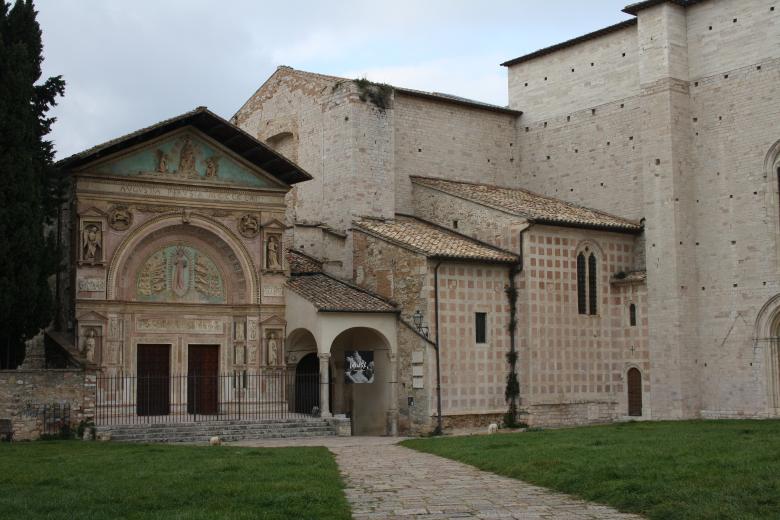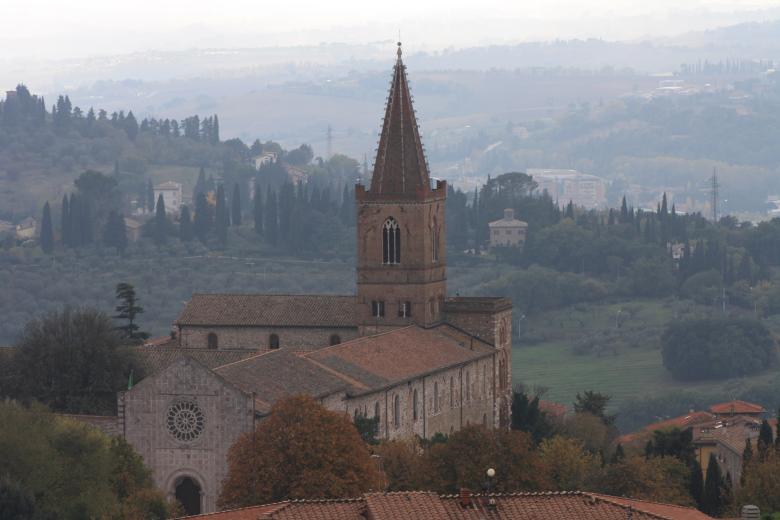Christmas lunch in Umbria
At Christmas, a festive atmosphere can be felt inside and outside the home, but the Christmas table is a true concentration of emotions and sensations: the aromas of traditional dishes, the warmth and affection of relatives and friends, the beauty of the decorations and festive table settings. This special occasion inspired UMBRIATOURISM to offer you a few tips for decorating and preparing your table and dishes, all strictly in Umbrian style!
It all starts with the table, set with a tablecloth woven in Umbria. There are plenty of choices: linen, hand-woven in Montefalco; refined and elegant with golden embroidery details in Spoleto; indigo blue decorations with origins dating back to the 14th century from Città di Castello; or the timeless fabrics produced in Perugia in the ancient church of San Francesco delle Donne.
The dishes must be crafted in one of the towns renowned for their ceramics: how about a set with Raphael-inspired decoration painted in Deruta? Or a gold and ruby lustre from Gubbio or Gualdo Tadino? Maybe both, especially if you want to highlight a unique piece that makes all the difference!
For a touch of atmosphere, add the soft glow of candles from the Cereria Medievale di Bevagna (Medieval Candle Workshop of Bevagna), made of beeswax since 1250.
Once the table is set, it is time to welcome the guests. The keyword for a proper Christmas menu is tradition.
From starters to dessert, here are some ideas to celebrate the upcoming Christmas holidays.
For starters, you can offer a classic platter of local cured meats and local cheeses, such as Prosciutto di Norcia IGP and Shepherd’s Pecorino di Norcia, served with bruschetta: the classic version with olive oil, liver pâté or black truffle.
The queen of the table for starters is the chicken galantine, prepared by stuffing a deboned chicken with minced meat and eggs, then boiled in broth and served in slices.
The lunch continues with first courses. A must-have are cappelletti in capon broth, a meat-filled pasta in the shape of a small hat (hence the name). Preparing the pasta is a ritual in itself, with relatives and friends gathering a few days before Christmas to prepare large quantities of pasta. In addition to cappelletti, Umbrian tables also feature strangozzi or lasagne.
For the main course, the classic roast, perhaps accompanied by potatoes, is a favourite. The star of the Christmas table is the baked “parmigiana di gobbi” (cardoon parmesan). This recipe requires lengthy preparation, but the result will not disappoint.





























.jpeg/0d7d918e-eddd-ed4c-9da2-23a6917261f0?width=780)
.jpg/57eda7af-f14d-d05d-f11c-d1cdb56c5f9f?width=780)






